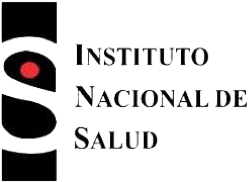Effect of maggot therapy on minimally necrotic tissues: characterization of larval enzymatic excretion/secretion
Abstract
Introduction. Chronic leg ulcers are a burden for the health system and impact quality of life. Theinfections, the necrotic tissue and the difficult treatment affects the prognosis and healing time. Maggottherapy is presented as an acceptable alternative for the debridement and treatment of this pathology.
Objective. The larval therapy was assessed on chronic leg ulcers with little necrotic tissue. Larvalexcretion and secretion (E/S) was characterized with respect to hemolymph (HL) enzymatic content.
Materials and methods. Three patients with chronic leg ulcers and low necrotic tissue were treatedwith larval therapy and were assessed with the PUSH (pressure ulcer scale for healing) and WoundBed Score. E/S and HL content was evaluated by SDS PAGE and zymogram.
Results. The clinical aspect of the wounds showed improvement, and the scores demonstrated anaverage decrease of 2.3 for the PUSH and an average increase of 2.7 for the Wound Bed Score.A wide diversity of enzymatic activity in the E/S was demontrated with major activity belonging to serineprotease family.
Conclusions. Maggot therapy proved an effective treatment in cases with minimal tissue necrosis andcan be considered a viable treatment option.
Downloads
References
Margolis DJ, Allen-Taylor L, Hoffstad O, Berlin JA. The accuracy of venous leg ulcer prognostic models in a wound care system. Wound Repair Regen. 2004;12:163-8. http://
dx.doi.org/10.1111/j.1067-1927.2004.012207.x
Araujo T, Valencia I, Federman DG, Kirsner RS. Managing the patient with venus ulcers. Ann Intern Med. 2003;138:326-34.
Lipsky BA. A current approach to diabetic foot infections. Curr Infect Dis Rep. 1999;1:253-60. http://dx.doi.org/10.1007/s11908-999-0027-1
Burd C, Langemo D, Olson B, Hanson D, Hunter S, Sauvage T. Skin problems: Epidemiology of pressure ulcers in a skilled care facility. J Gerontol Nursing. 1992;18:29-39.
Margolis DJ. The swings and roundabouts of randomized controlled studies in wound healing. Int J Low Extrem Wounds. 2004;3:4-6. http://dx.doi.org/10.1177/153473460431002
Ayello EA, Cuddigan JE. Debridement: Controlling the necrotic/cellular burden. Adv Skin Wound Care. 2004;17:66-75.
Florez E, Wolff M. Descripción y clave de los estadios inmaduros de las principales especies de Calliphoridae (Diptera) de importancia forense en Colombia. Neotrop
Entomol. 2009;38:418-29. http://dx.doi.org/10.1590/S1519-566X2009000300019
Sherman RA, My-Tien Tran JM. A simple, sterile food source for rearing the larvae of Lucilia sericata (Diptera: Calliphoridae). Med Vet Entomol. 1995;9:393-8. . http://
dx.doi.org/10.1111/j.1365-2915.1995.tb00011.x
Nuesch R, Rahm G, Rudin W, Steffen I, Frei R, Rufli T, et al. Clustering of bloodstream infections during maggot debridement therapy using contaminated larvae of Protophormia terraenovae. Infection. 2002;30:306-9. .
http://dx.doi.org/10.1007/s15010-002-3067-0
Ratliff CR, Rodeheaver GT. Use of the PUSH tool to measure venous ulcer healing. Ostomy Wound Manage.2005;51:58-60.
Falanga V, Saap LJ, Ozonoff A. Wound bed score and its correlation with healing of chronic wounds. Dermatol Ther. 2006;19:383-90. http://dx.doi.org/10.1111/j.1529-8019.
00096.x
Cazander G, Kiril EB, Bouwman L, Bernards A, Jukema G. The influence of maggot excretions on PAO-1 biofilm formation on different biomaterials. Clin Orthop Relat Res.
;467:536-45.http://dx.doi.org/10.1007/s11999-008-0555-2
Huberman L, Gollop N, Mumcuoglu KY, Block C, Galun R. Antibacterial properties of whole body extracts an haemolymph of Lucilia sericata maggots. J Wound Care. 2007;16:123-7.
Sambrook J, Russell DW. Molecular cloning, a laboratory manual. Third edition. New York: Cold Spring Harbor Laboratory Press; 2001. p. A8.40-6.
Choi NS, Yoon KS, Lee JY, Han KY, Kim SH. Comparison of three substrates (casein, fibrin, and gelatin) in zymographic gel. J Biochem Mol Biol. 2001;34:531-6.
Tanyuksel M, Araz E, Dundar K, Uzun G, Gumus T, Alten B, et al. Maggot debridement therapy in the treatment of chronic wounds in a military hospital setup in Turkey. Dermatology.
;210:115-8. http://dx.doi.org/10.1159/000082566
Chambers L, Woodrow S, Brown AP, Harris PD, Phillips D, Hall M, et al. Degradation of extracellular matrix components by defined proteinases from the greenbottle larva Lucilia sericata used for the clinical debridement of
non-healing wounds. Br J Dermatol. 2003;148:14-23. http://dx.doi.org/10.1046/j.1365-2133.2003.04935.x
van der Plas MJ, van der Does AM, Baldry M, Dogterom-Ballering HC, van Gulpen C, van Dissel JT, et al. Maggot excretions/secretions inhibit multiple neutrophil proinflammatory
responses. Microbes Infect. 2007;9:507-14.http://dx.doi.org/10.1016/j.micinf.2007.01.008
Hoffmann DC, Textoris C, Oehme F, Klaassen T, Goppelt A, Römer A, et al. Pivotal role for alpha1-antichymotrypsin in skin repair. J Biol Chem. 2011;19;286:28889-901. http://
dx.doi.org/10.1074/jbc.M111.249979
van der Plas MJ, van Dissel JT, Nibbering PH. Maggot secretions skew monocyte-macrophage differentiation away from a pro-inflammatory to a pro-angiogenic type. PLoS One. 2009;4:e8071. http://dx.doi.org/10.1371/journal.
pone.0008071
Bexfield A, Nigam Y, Thomas S, Ratcliffe NA. Detection and partial characterization of two antibacterial factors from the excretions/secretions of the medicinal maggot Lucilia sericata and their activity against methicillinresistant
Staphylococcus aureus (MRSA). Microbes Infect. 2004;6:1297-304. http://dx.doi.org/10.1016/j.micinf. 2004.08.011
Altincicek B, Vilcinskas A. Septic injury-inducible genes in medicinal maggots of the green blow fly Lucilia sericata. Insect Mol Biol. 2009;18:119-25. http://dx.doi.org/10.1111/
j.1365-2583.2008.00856.x
Sherman RA. Maggot therapy for treating diabetic foot ulcers unresponsive to conventional therapy. Diabetes Care. 2003;26:446-51. http://dx.doi.org/10.2337/diacare.26.2.446
Dumville JC, Worthy G, Bland JM, Cullum N, Dowson C, Iglesias C, et al. Larval therapy for leg ulcers (VenUS II): Randomized controlled trial. BMJ. 2009;19;338:b773. http://
dx.doi.org/10.1136/bmj.b773
Young AR, Meeusen EN, Bowles VM. Characterization of ES products involved in wound initiation by Lucilia cuprina larvae. Int J Parasitol.1996;26:245-52. http://dx.doi.org/10.1016/0020-7519(95)00123-9
Schmidtchen A, Wolff H, Rydengard V, Hansson C. Detection of serine proteases secreted by Lucilia sericata in vitro and during treatment of a chronic leg ulcer. Acta Derm
Venereol. 2003:83:310-1.
Some similar items:
- Myriam C. López, Sofía Duque, Luis C. Orozco, Diana Camargo, Luis E. Gualdrón, Elvia Cáceres, Margarita Ronderos, Maritza Rey, Augusto Corredor, lmmunodiagnosis of Chagas' disease by ELlSA , Biomedica: Vol. 19 No. 2 (1999)
- biomedica biomedica, Cartas al editor , Biomedica: Vol. 29 No. 1 (2009)
- Ana María Perilla, Camilo González, Sandra Liliana Valderrama, Natasha Vanegas, Bibiana Chavarro, Luis Carlos Triana, José Roberto Támara, Carlos Arturo Álvarez, Necrotizing pneumonia by community-acquired, methicillin-resistant Staphylococcus aureus in Colombia , Biomedica: Vol. 29 No. 4 (2009)
- Olga Lucía Morales, María de la Luz Valencia, Carolina Gómez, María del Pilar Pérez, Emilio Sanín, Luz Marina Vásquez, Chest wall mesenchymal hamartoma: a case report , Biomedica: Vol. 30 No. 1 (2010)
- Paúl Andrés Gómez-Sandoval, Gustavo Pradilla, Re: Badillo R, Mantilla JC, Pradilla G. Encefalitis rábica humana por mordedura de murciélago en un área urbana de Colombia. Biomédica. 2009;29(3):191-203. , Biomedica: Vol. 30 No. 1 (2010)
- Alberto Morales, Letters to the editor , Biomedica: Vol. 30 No. 2 (2010)
- Julián Alfredo Fernández, Alvaro Javier Idrovo, Carlos Andrés Castañeda, Vanesa Giraldo-Gärtner, Juan Gabriel Piñeros, Determinantes sociales de la malaria… ¿Aportes de la Medicina Social Latinoamericana? , Biomedica: Vol. 30 No. 3 (2010)
- Berta Nelly Restrepo, María Teresa Restrepo, Juan Camilo Beltrán, Mónica Rodríguez, Ruth Emilia Ramírez, Nutritional status of indigenous children aged up to six years in the Embera-Katio Indian , Biomedica: Vol. 26 No. 4 (2006)
- Adalberto Campo-Arias, Usos del coeficiente de alfa de Cronbach , Biomedica: Vol. 26 No. 4 (2006)
- Lucía Carolina Leal-Esteban, Jessica Lineth Rojas, Andrea Lizeth Jaimes, Juan David Montoya, Nilton Edu Montoya, Lily Leiva, Claudia Milena Trujillo-Vargas, An immunoenzymatic test for IgG antibody levels against 10 serotypes of Streptococcus pneumoniae , Biomedica: Vol. 32 No. 1 (2012)
| Article metrics | |
|---|---|
| Abstract views | |
| Galley vies | |
| PDF Views | |
| HTML views | |
| Other views | |


























